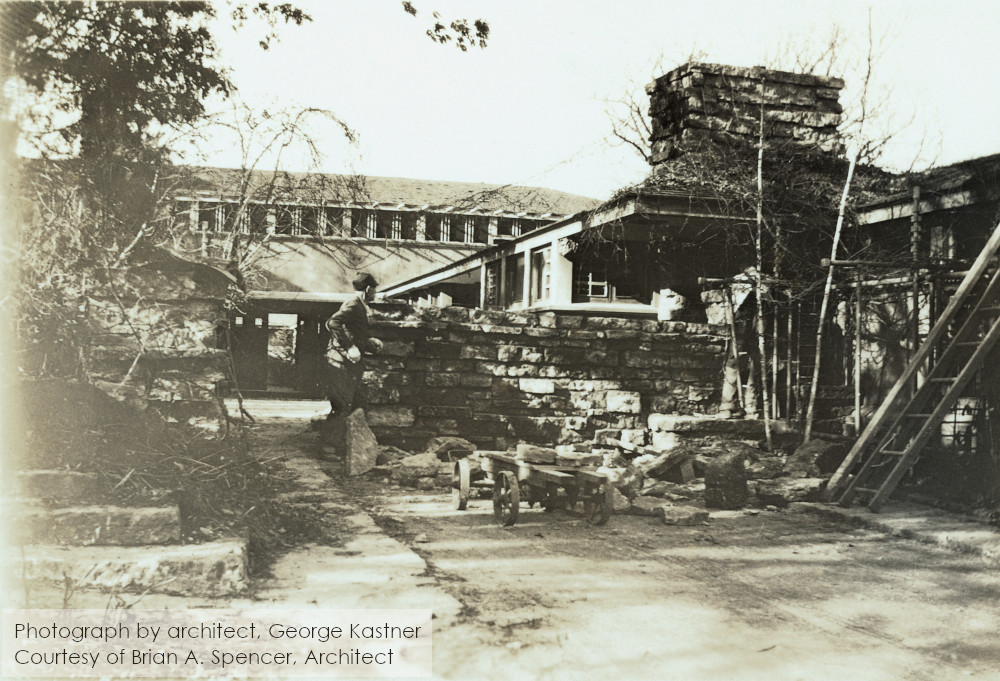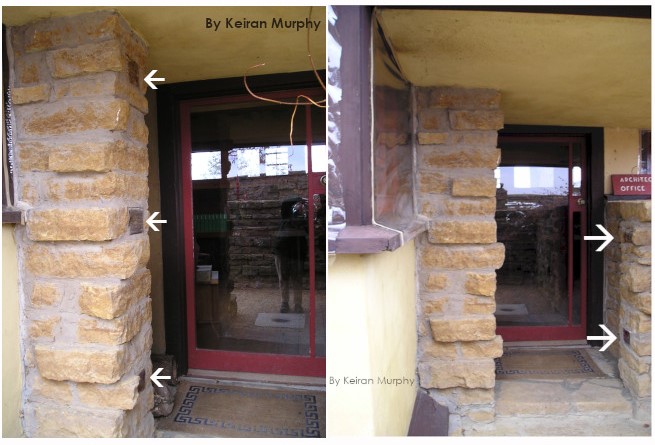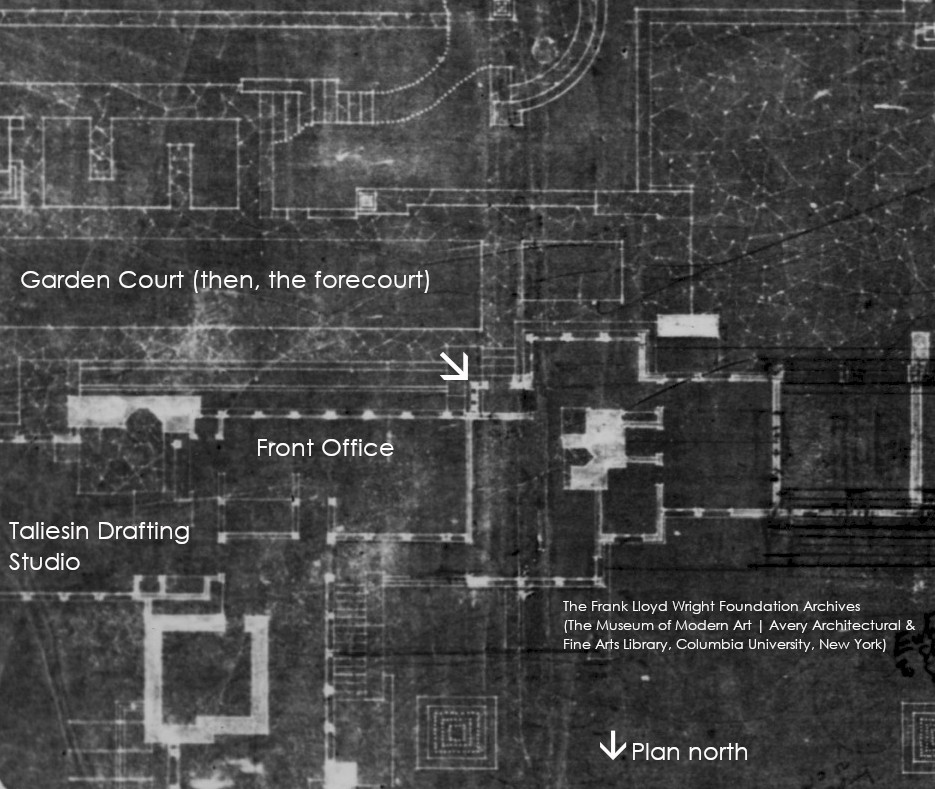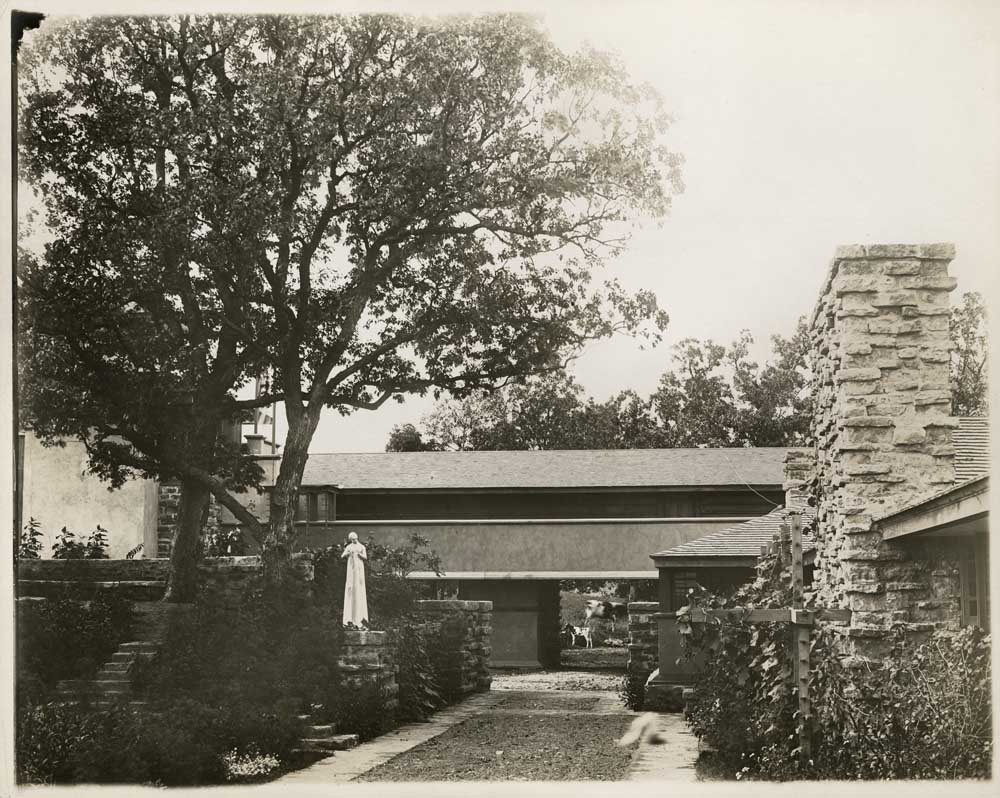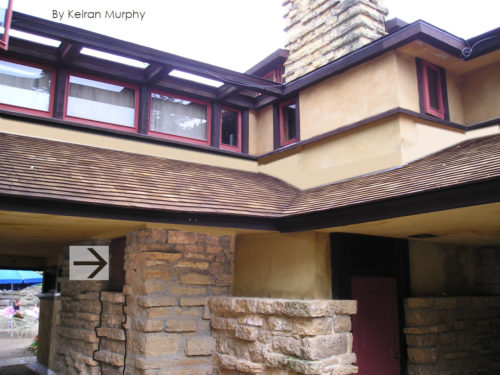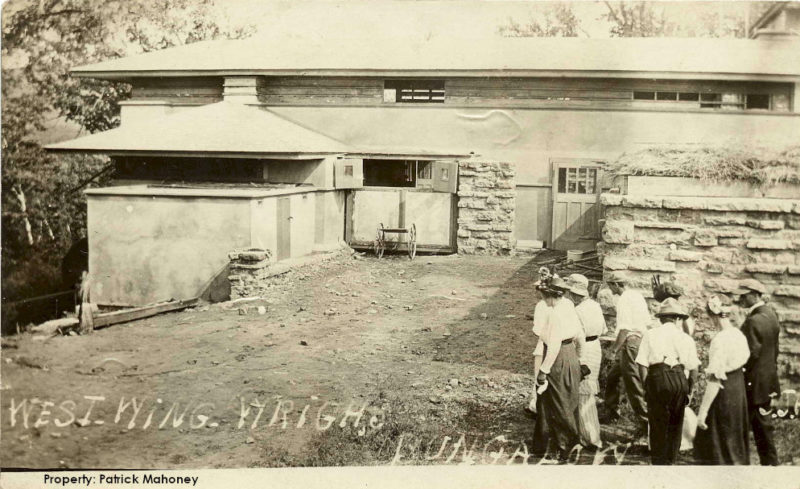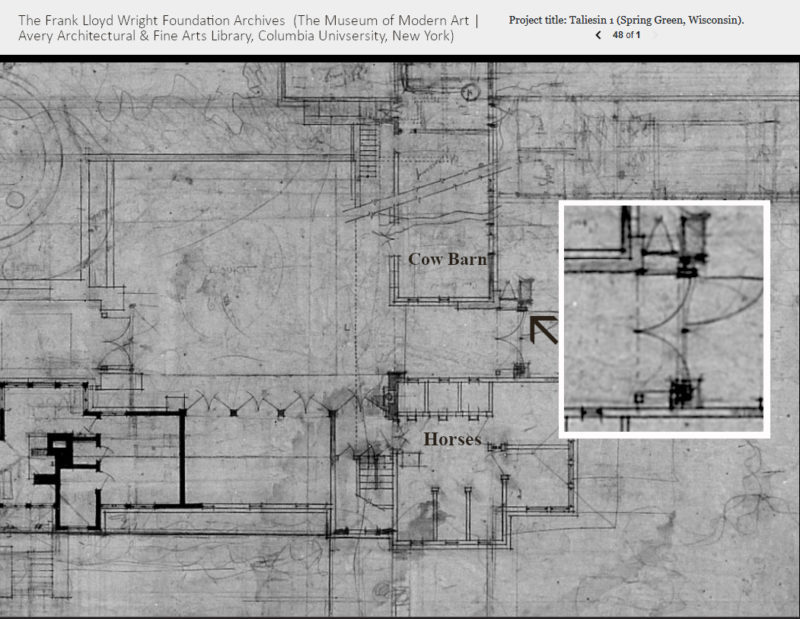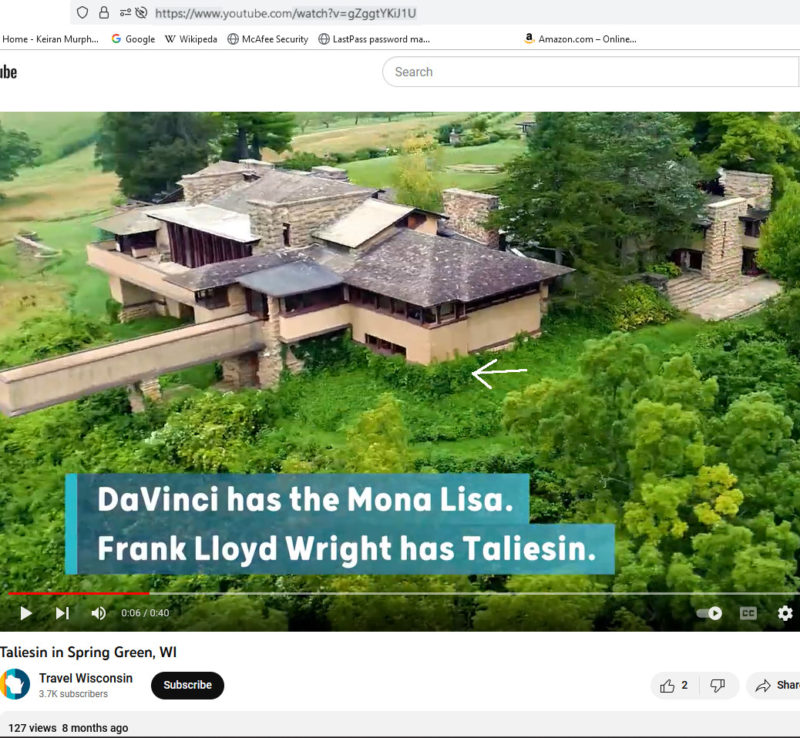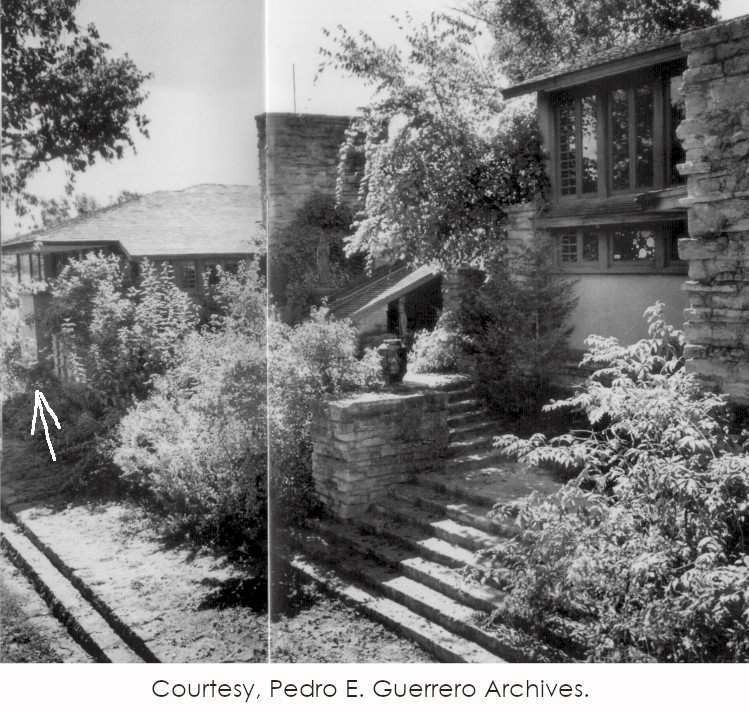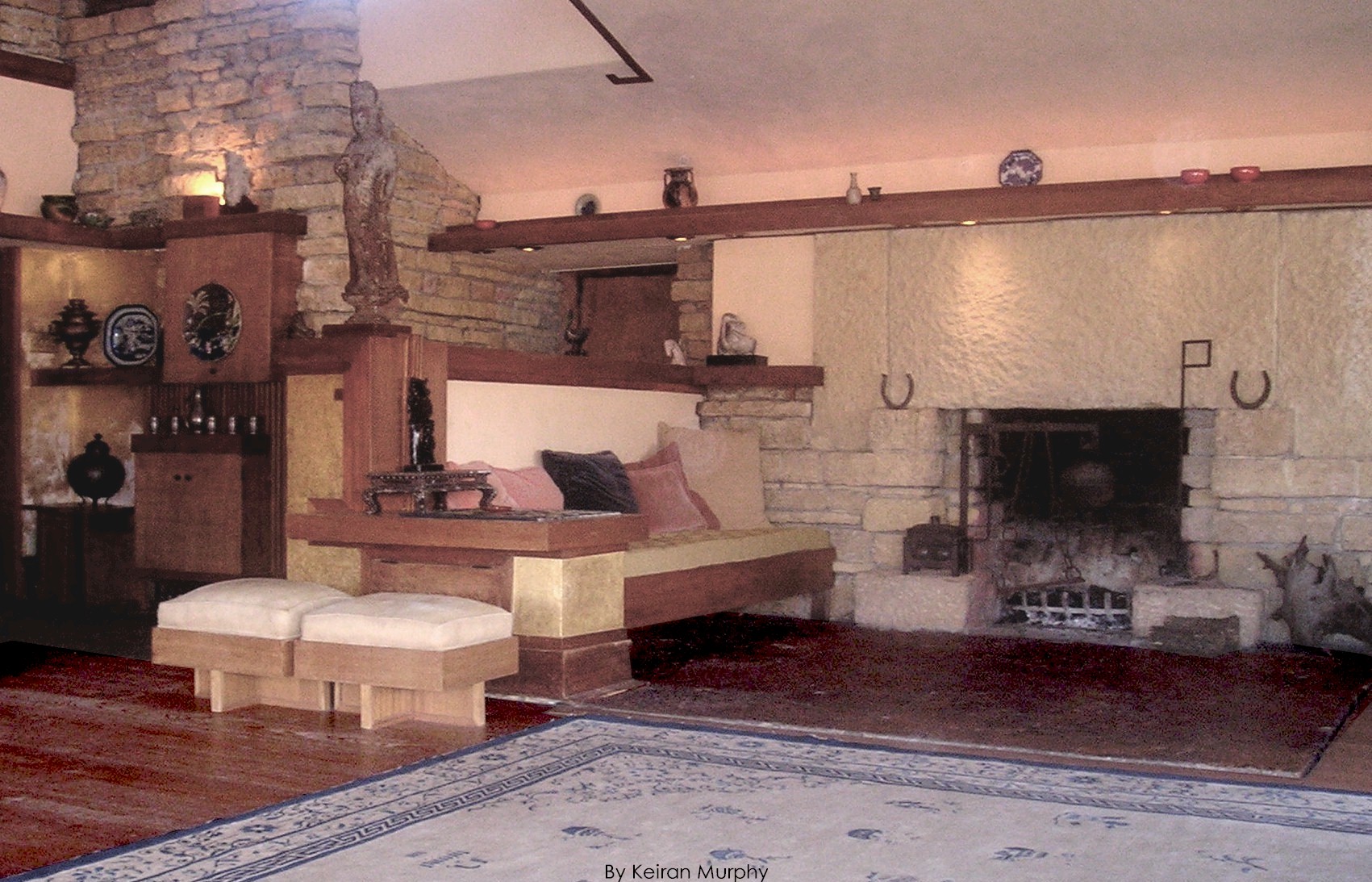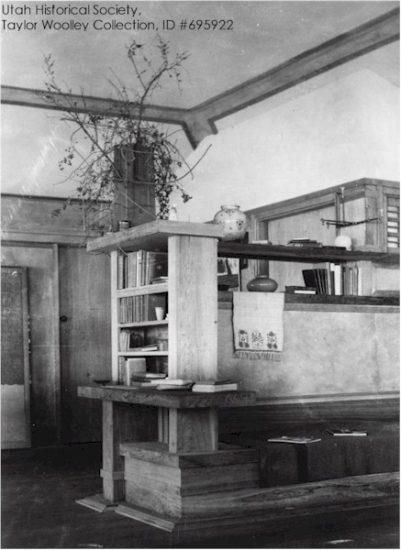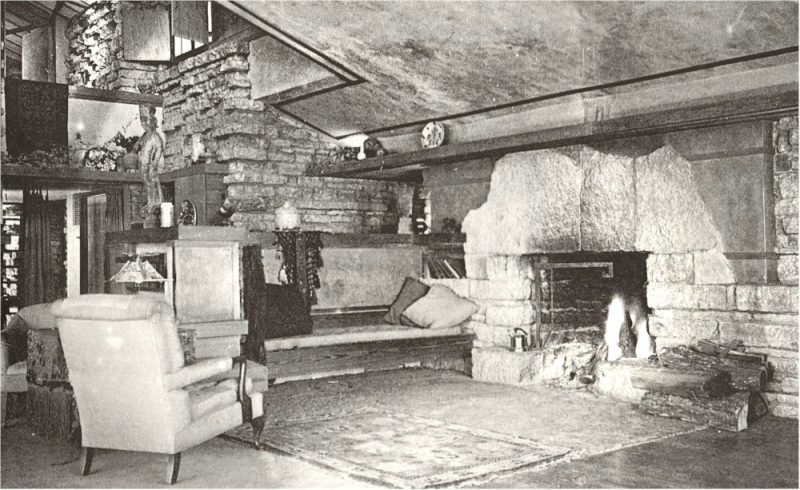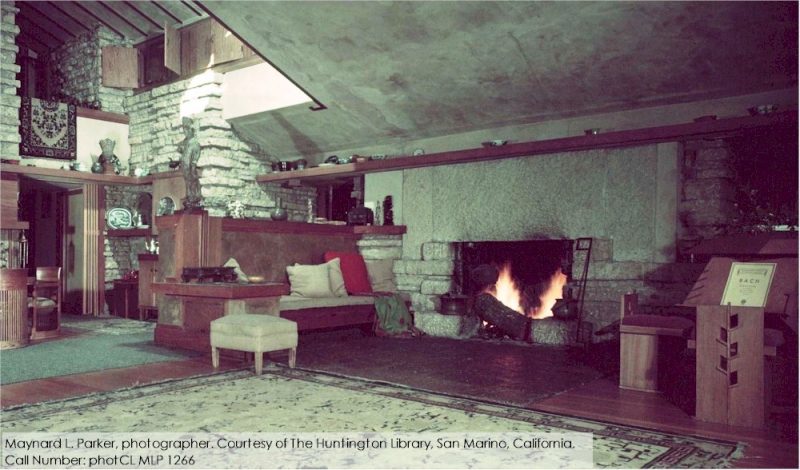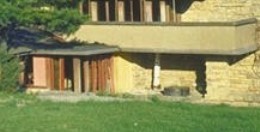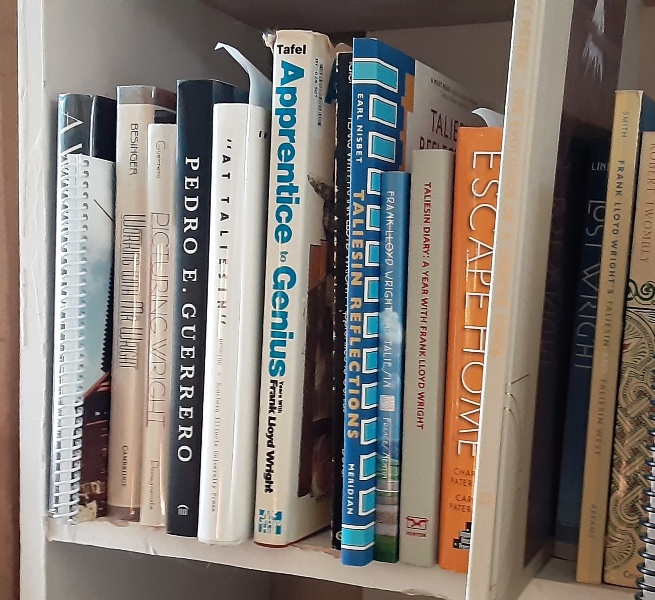Color photo taken in Wright’s bedroom at Taliesin, 1955. I don’t think you can miss the blue shag rug in the photo’s foreground.
He didn’t have blue suede shoes, but he did have a blue shag rug on the floor of his Wisconsin bedroom.
Someone asked about this the other day at Facebook, so I thought I’d write about the shag rug in today’s post. It might save some time, since people often don’t believe on Taliesin tours that he had blue shag.
I grew up in a time in which people liked shag. While today we associate it with water beds and 1970s sitcoms, there’s at least one manufacturer in Australia that’s currently making them. They’re out of the country so I’m sure they’re up on the latest trends:
Contemporary photo of a brown shag rug with a porcelain tiger on the edge of it.
And, like many things I’ve learned at Taliesin, studying the story of shag rugs taught me something new.
Here’s a bit from Boutique Rugs.com about shag rug history:
Ancient Origins
Historians trace the origins of shag rugs back to Ancient Greece, the Middle East, and Central Asia, though their definitive starting point is unclear. Back then, shag rugs were usually made of woven goat hair…. In contrast to the decorative rugs that were also prominent at the time, Flokati rugs served to provide people with warmth and kept them comfortable as they walked around or sat on the ground. Their utilitarian purpose meant they were not strictly limited to the elites of society.
Boutique Rugs.com says that this utilitarian quality of shag rugs made them popular in the 1960s and ’70s. Maybe that’s why many have a bad taste in their mouth about them today.
maybe Millenials and Generation Z are into them
Although, the current disdain wasn’t confined to Taliesin tour visitors.
When I worked there, one guide insisted that the blue shag was all the doing of Wright’s wife, Olgivanna.
if any of you edit Wikipedia pages, could you read the page about Olgivanna? I added citations and changed the “tone” (I think), but “Wikipedians” frown on people who improve the articles then removing the warnings that had been placed there. If it’s good to go, get rid of that warning, kthxbye.
Hence, I gave John as much evidence of Wright’s ownership and use of the shag rug as I could. In my vain effort to convince John that Wright did what he wanted [gorramit], I got the color photograph by Maynard Parker that’s at the top of the page.
(a crop of this image is in another post I put up over a year and a half ago)
Plus, Pedro Guerrero (Wright’s preferred photographer) took a couple of photos showing Wright’s bedroom, and the shag, in the 1950s:

Looking south in Wright’s bedroom, 1952. Published in Picturing Wright: An Album From Frank Lloyd Wright’s Photographer, p. 76.
Yet, there’s still more
to the Taliesin shag-story.
This started in the 1970s.
Apparently, someone “cut a deal” and acquired lots of shag (much of it blue). In fact when I started at Taliesin, blue shag was all over the place.
It had the vibrancy of the character of Grover on Sesame Street:
An image of Grover from the Muppet Wiki: an encyclopedia of all things Jim Henson, Sesame Street, the Muppet Show and the Muppet Studio.
Moreover, there was blue shag on the floors in almost every room that people saw at Hillside, including on the floor of the Theater Foyer.
Which I guess made the stone floor feel nicer in the spring when it’s still cold.
It was also at Taliesin.
- on the floor in the Entry Foyer (the first room you walked into),
- the Loggia Fireplace,
- the Garden Room,
- and was a runner that went all the way from Taliesin’s Living Room to Wright’s bedroom.
So, when you got to Wright’s Bedroom, everyone would compliment this better-looking shag.
But this shag rug from the ’70s had a rubber backing. And when you removed the rugs from a stone floor, about a ½ inch of limestone or sandstone had disintegrated underneath it.
How do I know this?
Because I was one of the folks who removed it, of course.
As I recall,
one season, an apprentice (a.k.a. a student) at the Frank Lloyd School of Architecture removed the piece in the Hillside Drafting Studio. It acted as a border when you walked into the room with your tour groups.
Then, before next season,
the head Taliesin tour guide, Craig, decided to remove the rug on the floor of Hillside’s Dana Gallery.
He confided that if anyone in the Taliesin Fellowship protested at the removal, we’d put it back.
They didn’t say anything.
Then we tackled the shag in the Hillside Theater and Hillside Foyer.
that’s when I found little dust piles of limestone that had been under the shag.
In the following tour seasons, pieces disappeared from the public and private spaces at both Hillside and the Taliesin structure.
Finally,
the only shag left was in Wright’s bedroom.
Here’s a photo below that was taken in Wright’s bedroom in early May 1959. The apprentice who took it, Robert Green, had just arrived back from Arizona. He had entered the Fellowship the previous November, so the spring of 1959 would have been his first time seeing Taliesin. Fortunately, he took these color images before he left the Fellowship, and someone acquired them over a dozen years ago.
You can see in the photos that the Fellowship hadn’t quite known what to do with Frank Lloyd Wright’s Bedroom, so they just kept everything in the same place while adjusting to their new world.

Taken in Frank Lloyd Wright’s Bedroom looking south. Wright’s bed is behind the photographer.
William Blair Scott, Jr. Collection at the OA+D Archives. Permission from Bill Scott.
First published July 29, 2024.
The photograph at the top of this post was taken by Maynard Parker in 1955 and is available on this web page.




